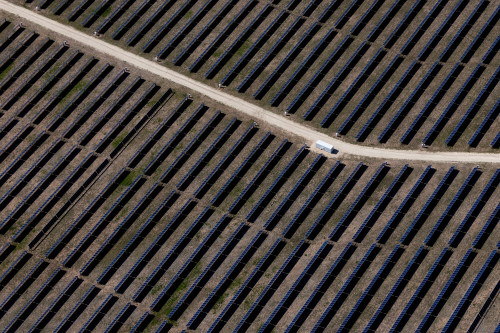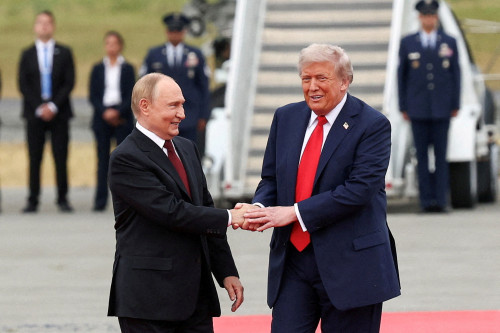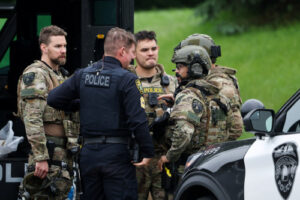(Reuters) -Violeta Barrios de Chamorro, the first female president of Nicaragua, died early Saturday morning in Costa Rica at the age of 95, her family announced in a statement.
Chamorro, an unlikely leader whose rise to power was fueled by her husband’s murder, served as president from 1990-1997.
She championed regional development and peace after years of a violent civil war, but her presidency was hampered by runaway inflation and economic hardship.
After suffering a stroke in 2018, Chamorro left public life due to a tumor and subsequent ailments. In October 2023, under constant medical care, she moved to Costa Rica, where two of her exiled children reside: Cristiana and Carlos Fernando Chamorro Barrios. A son, Pedro Joaquín, and daughter, Claudia Lucia live in the U.S.
“Doña Violeta passed away peacefully, surrounded by the love and affection of her children and the people who provided her with extraordinary care,” her four children said in a statement.
The former president will be temporarily buried in the Costa Rican capital “until Nicaragua once again becomes a republic, and her patriotic legacy can be honored in a free and democratic country,” her children said.
POLITICAL CAREER
Born on October 18, 1929 to a wealthy family in the southern city of Rivas, she was an unlikely recruit for the rebel cause. Educated in private schools in the United States, her education was interrupted when her father died of lung cancer.
Shortly after returning home, Violeta Barrios Torres met and married Pedro Joaquín Chamorro, the owner and editor of La Prensa newspaper and a staunch opponent of the dictator Somoza. Chamorro was imprisoned several times and exiled. His death in 1978 accelerated the popular uprising against Somoza, led by the Sandinista guerrillas who overthrew him a year later.
It also elevated “Doña Violeta,” who at the time had little political experience, to the forefront of national politics. “I gave myself to (politics) so that Pedro and Nicaragua could triumph through me,” she wrote in her memoirs, “Dreams of the Heart.”
After the Sandinista Revolution of 1979, her rejection of the dictatorship led her to participate in the first Government Junta of National Reconstruction, where she met the then—and still current—President of Nicaragua, Daniel Ortega, leader of the revolutionary process of that time.
Dissatisfied with the direction things were taking, Barrios de Chamorro resigned from the Junta, which had been dominated by the Sandinista National Liberation Front (FSLN), and criticized them through La Prensa, turning her into one of the strongest critics of the government.
Later, the journalist joined a coalition of 14 parties that was united only by their shared rejection of the Sandinista government.
In 1989, Chamorro ran for president of Nicaragua for the opposition coalition and won the election with 54% of the vote, becoming the first woman elected to president in all of the Americas.
“I will return to the people the right to elect their leaders through fair and open elections. And, above all, I will offer honesty, not only in appearance but also in practice,” she announced at the time.
Her victory ended the military conflict in Nicaragua by disarming some 20,000 rebels, known as “contras,” mostly peasants recruited for a war that enjoyed military and economic support from the United States. She also reduced the Sandinista army from more than 100,000 to about 12,000 men, changing its name to the National Army and initiating its professionalization.
Chamorro’s critics considered her not an authentic politician, but rather the wife of a rebel journalist who died for her cause while she compromised his ideals. However, she was widely praised for ending the war and overseeing the first peaceful transition of power in Nicaraguan history.
Once in government, Chamorro reversed some of the measures adopted by the FSLN. She implemented a plan of fiscal austerity and privatization of public companies, while also negotiating with the FSLN to maintain some of the revolution’s achievements.
Upon taking office in April 1990, Chamorro took over a country dealing with a recession, a trade deficit, massive foreign debt and runaway inflation that hampered her administration.
In addition, the Sandinistas, led by Ortega, from the opposition, sabotaged her administration with constant strikes and uprisings. “She was aware of the role she had to play in an impoverished country devastated by war; she always made it clear that her goal was to achieve peace and reconciliation,” said Jose Davila, former Nicaraguan ambassador to Germany during her administration.
In January 1997, after her term ended and she was no longer eligible for reelection, Barrios de Chamorro retired from politics.
Ortega retook power in 2007 and has since cracked down on dissent and imprisoned critics, leading thousands to flee, including Chamorro’s family.
One of her four children, Cristiana Chamorro, ran for president in the 2021 elections, but her bid was thwarted by the Ortega government.
(Reporting by Gabriela Selser, Editing by Franklin Paul)





